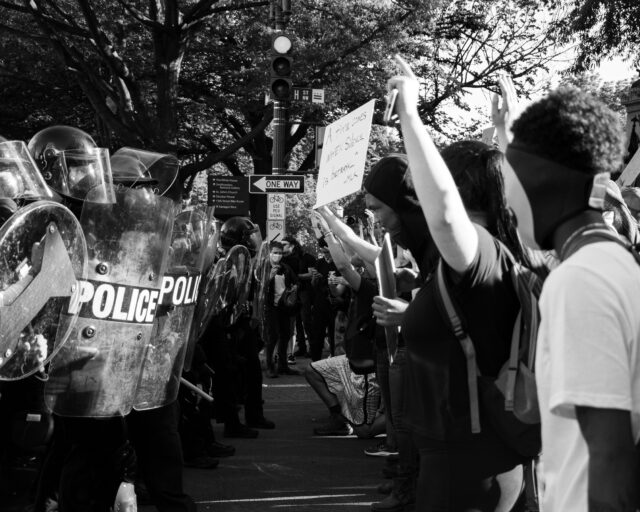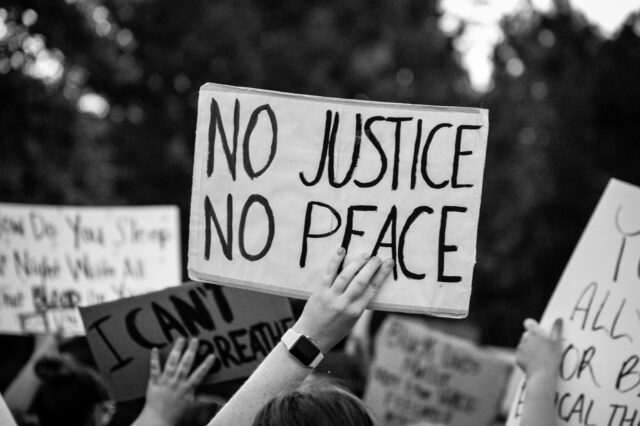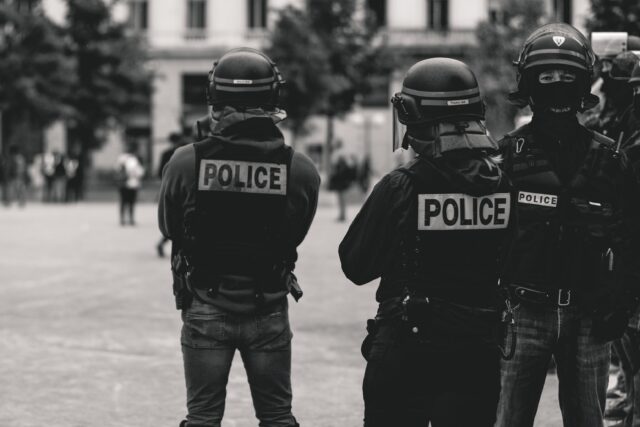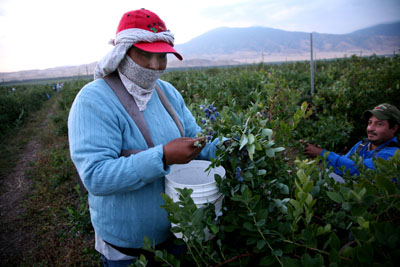Shots Fired, and Profited On: Inside the Campaign against “ShotSpotter” in Chicago
A controversial police technology company uses money, influence, and secrecy to benefit its bottom line. Can a group of Chicago organizers take it on?
Anna Bower
June 14, 2022
A few hours before dawn on March 29, 2021, eight loud “pops” echoed down 24th Street in Little Village, a predominantly Latinx neighborhood on Chicago’s West Side. At the same moment, three mailbox-sized acoustic sensors perched on nearby buildings recorded the sounds and transmitted the audio to a review center three thousand miles away in Newark, California. In seconds, a human analyst identified the sounds as gunshots, triggering a “shots fired” alert to Chicago police. Two minutes later, an officer responding to the scene shot and killed Adam Toledo, a thirteen-year-old boy.
By mid-April, Chicago officials ceded to public demands to release body-camera footage of the shooting. The footage shows a foot pursuit of Toledo, who allegedly carried a gun that had been passed off to him by the man who fired it minutes earlier. On the video, an officer corners Toledo in a narrow alley. The officer yells, “Hands! Show me your hands!” Toledo, his back to the officer, appears to throw something to the ground before pivoting around, empty hands raised in the air. For a split second, he could be any seventh grader, anywhere: wide-eyed gaze, gleaming white sneakers, black Nike hoodie emblazoned with “just do it!” The officer fires a single shot, piercing Toledo’s chest.
Toledo’s killing reignited protests in Chicago, where trust in the police had already hit rock bottom. But in the months following Toledo’s death, the focus of those protests shifted to another, oft-invisible player in America’s sprawling police state: the corporation. The corporation at the center of the controversy is “ShotSpotter,” the maker of the gunshot detection technology that initially alerted Chicago police to 24th Street last spring.
But in the months following Toledo’s death, the focus of those protests shifted to another, oft-invisible player in America’s sprawling police state: the corporation.
ShotSpotter isn’t a household name, but the company’s microphones blanket cities all over America. The sensors, which ShotSpotter installs on streetlamps, rooftops, and other structures, come equipped with a machine-learning algorithm that detects the distinctive sound markers associated with gunfire.
When the algorithm hears a likely gunfire event, it pinpoints the location and sends a recording to an “Incident Review Center” for human confirmation. Once confirmed, ShotSpotter alerts local police, flooding officers’ phones or control centers with notifications. According to ShotSpotter, all of this happens in less than a minute—and supposedly yields a 97% accuracy rate.
ShotSpotter has been touted as an antidote to America’s gun violence epidemic, and the company says that it can save lives, reduce police response times, and improve community relations with the police. Drawn to these claims, more than 120 cities in North America have contracted with ShotSpotter for their gunshot detection technology. The company is now the leading gunshot detection company on the market, boasting more than 700 square miles of coverage in major cities like Chicago, New York, and Boston.
ShotSpotter’s technology joins an increasingly long list of surveillance tools that police buy, lease, or license from private companies. But, as ShotSpotter seeks to expand its business, the company’s claims have received increased scrutiny. Critics say that ShotSpotter isn’t reliable, does little to make communities safer, and could lead to more police brutality in Black and Latinx communities. The criticism has left some wondering: If ShotSpotter doesn’t live up to its promises, why do police and local officials keep throwing money at it?
Based on interviews with organizers and experts, public records, court documents, marketing materials, and news reports, this is the story of how one surveillance technology company uses money, influence, and secrecy to benefit its bottom line—and the group of Chicago organizers who took it on.
__________
On the same morning in March that police shot Toledo, the nation trained its eyes on Minneapolis, where opening statements were set to begin in the trial of Derek Chauvin, the former police officer charged with killing George Floyd. A year earlier, Chauvin knelt on Floyd’s neck for nearly nine minutes, even as bystanders pleaded for his release. Amid the national outcry that swept the nation in the following days, progressive activists called for local governments to defund or abolish the police.
For a fleeting moment, a reckoning seemed inevitable. But when autumn arrived, there was a feeling that much had changed and yet nothing had changed at all. The summer of 2020 reprised an enduring American narrative: police brutality, civil unrest, policy stagnation.

Credit: Koshu Kunii
In Chicago, that same cycle has played out countless times before. Toledo’s death evoked memories of an earlier police killing of a Black teenager, Lacquan McDonald. In 2014, officer James Van Dyke fatally fired sixteen shots at McDonald. While Van Dyke maintained that he acted in self-defense, that claim was proved false by a video—released more than a year after the incident—that appeared to show McDonald walking away from the officer.
The fallout resulted in a murder conviction for Van Dyke and prompted a federal investigation into Chicago’s police practices. In 2017, the Department of Justice released a scathing report, concluding that the Chicago Police Department engaged in a pattern or practice of unreasonable force, especially in Black and Latinx communities.
That’s why, last spring, a sense of déjà vu loomed over the intermittent gatherings held at the site of Toledo’s killing in Little Village. Against the wooden fence, visitors fashioned a makeshift memorial out of various objects: crimson-red carnations, white balloons, a Mexican flag. In speeches and chants, protestors called for accountability and police alternatives. David Brown, the Chicago Police Superintendent, voiced his department’s common refrain: “Our officers must make split-second decisions when it comes to the use of deadly force, and that is a heavy burden.”
David Brown, the Chicago Police Superintendent, voiced his department’s common refrain: “Our officers must make split-second decisions when it comes to the use of deadly force, and that is a heavy burden.”
As news trickled out that a ShotSpotter alert brought police to Little Village, some commentators speculated that the technology contributed to the creation of a dangerous situation, priming the officer to perceive Toledo’s act of compliance—raising his empty hands in the air—as a threat.
“Police are getting an alert and they are showing up to a place as if shots have been fired,” Matthew Guariglia, a policy analyst who works on issues of surveillance and policing for the Electronic Frontier Foundation, told me when we met over Zoom in March. “That heightens the level of danger for people who happen to be at the site of that alert.”

Credit: Kalea Morgan
Chicago officials have described ShotSpotter’s gunshot detection technology as a “key element” in the city’s gun violence reduction strategy. In 2018, Chicago became ShotSpotter’s largest client when it signed a three-year contract worth up to $33 million. In exchange for the city’s annual subscription fee, ShotSpotter provides round-the-clock gunshot detection services in twelve districts across Chicago. According to the MacArthur Justice Center, these twelve districts are also those with the highest proportion of Black and Latinx populations, and the lowest number of White residents.
Alyx Goodwin, a senior organizer with The Action Center on Race and the Economy (ACRE), gathered a group of activists to talk about organizing around ShotSpotter. Earlier that year, while researching a report for ACRE on police technology, Goodwin became concerned about ShotSpotter’s impact on communities of color. “ShotSpotter being deployed in Black and Brown communities in particular very much skews narratives about our communities,” she told me. “It’s just pushing that narrative about crime in Black and Brown and poor neighborhoods.”
When Goodwin and the other organizers learned that Chicago’s contract with ShotSpotter would expire at the end of the summer, they decided to build a campaign around preventing the contract’s renewal. Goodwin believed Toledo’s death could have been avoided if the city divested from surveillance technology like ShotSpotter and, instead, reinvested that money into the community. “We need to invest more money in things that stop the violence or prevent the violence in the first place,” she said.
Goodwin believed Toledo’s death could have been avoided if the city divested from surveillance technology like ShotSpotter and, instead, reinvested that money into the community.
Goodwin, embedded in activist circles since her days as an undergraduate, was already familiar with campaigns to cancel contracts with private prisons or housing developers. In the context of policing, the private sector focus felt new. “What’s interesting and different about this campaign is that it’s organized around a contract. I don’t think we’ve seen this strategy a whole lot in terms of policing,” she told me.
The organizers knew that ShotSpotter’s $9 million dollar per year contract was, as Goodwin put it, just “a drop in the bucket” compared to Chicago’s mammoth $1.6 billion dollar police budget. But the campaign, Goodwin said, had a larger purpose: “We really saw this as a way to truly get justice for Adam Toledo’s family, right?” she said. “To actually get rid of the piece of technology that caused his death.”
__________
ShotSpotter’s origin story, like many cautionary tales of modern surveillance technology, begins in Silicon Valley, with a scientist, a billionaire, and a Harvard Business School graduate.
Around 1994, a grandfatherly astrophysicist named Robert Showen began to worry about gun violence. At the time, Showen worked at the Stanford Research Institute in Menlo Park, a ritzy enclave in the San Francisco Bay area. A few miles down the road, the city of East Palo Alto had recorded one of the highest murder rates in the country. “They’re our neighbors,” Showen explained in an interview with a local newspaper. “We thought that maybe we could help with the gunfire problem in our cities by finding out where they’re located.”
Showen, like all the college dropouts, Wall Street types, and wayward scientists who had migrated to Menlo Park that year, thought his tech showed promise.
At SRI, Showen formed a research group to study the application of acoustic wave technology to gunshot location detection. The project was short-lived; after only a year, the SRI group lost its funding. But something was in the air in Silicon Valley. The Internet had spawned hundreds of technology companies around the country, and the Valley stood on the cusp of a dot-com boom.
Showen, like all the college dropouts, Wall Street types, and wayward scientists who had migrated to Menlo Park that year, thought his tech showed promise. In 1996, he quit his job at SRI to form a start-up, “ShotSpotter.”











